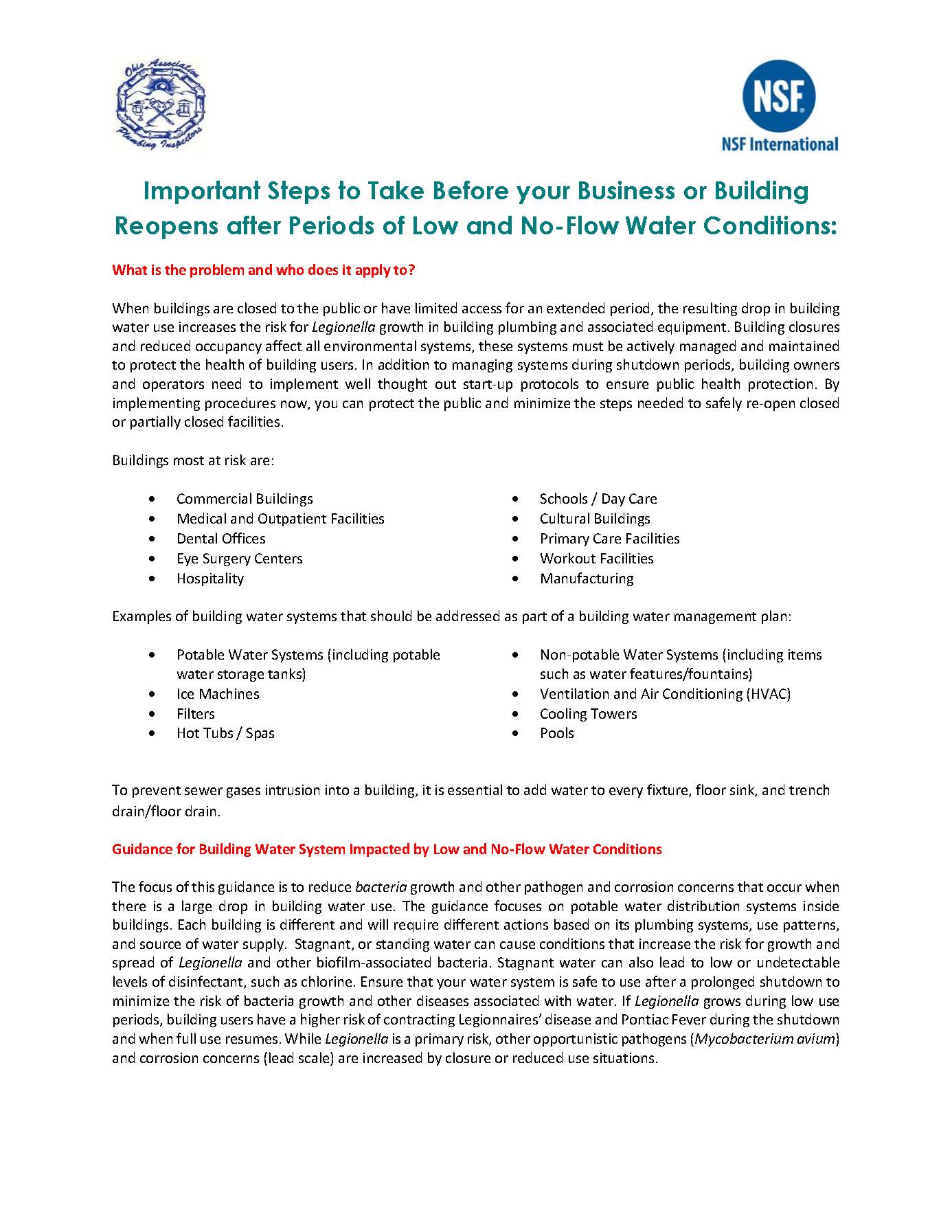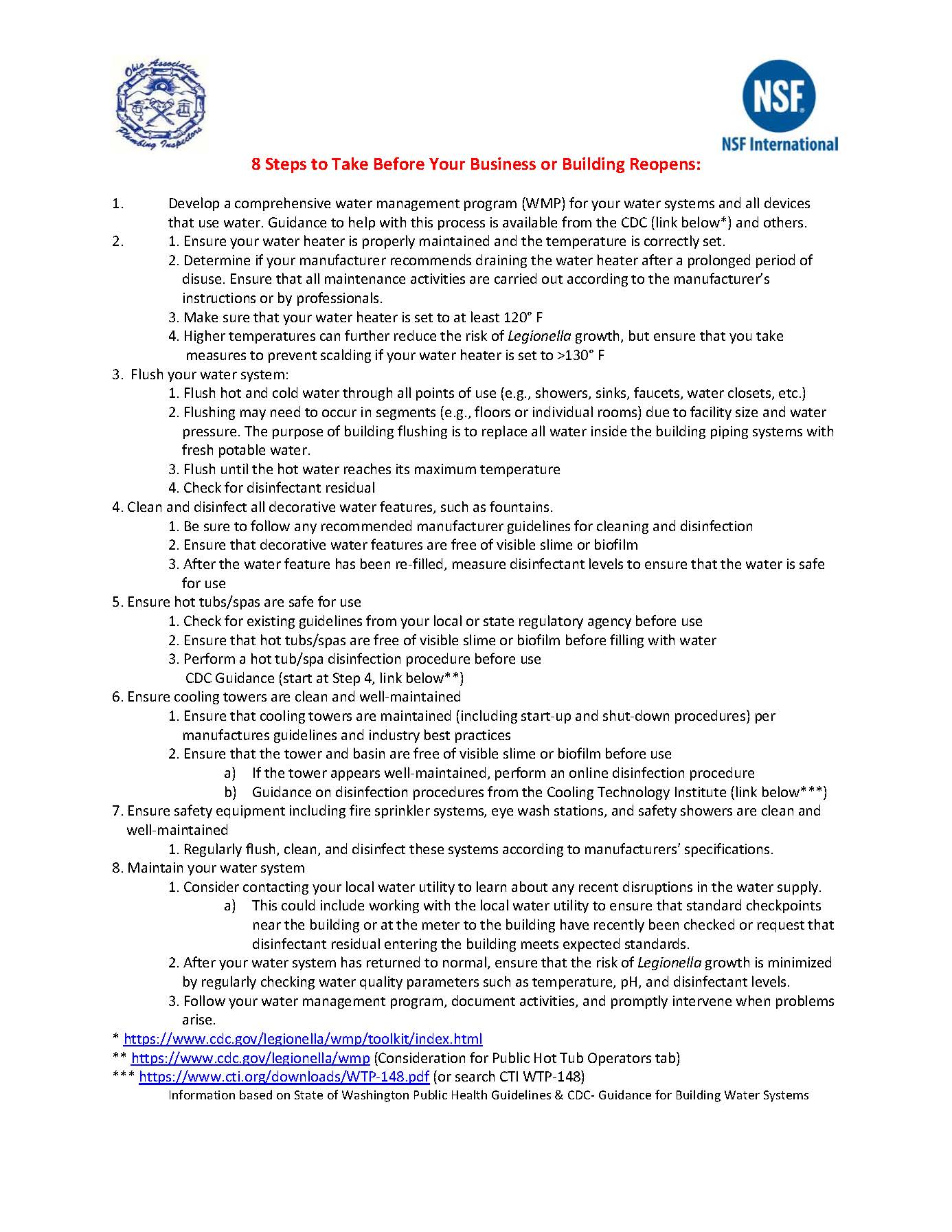GCWW Guidance for Businesses Re-opening & Water Flushing
Apr 29, 2020
(CINCINNATI, OH) – As the State of Ohio initiates its Responsible Restart Ohio approach to COVID-19, Greater Cincinnati Water Works (GCWW) is providing the following guidance to homeowners and business owners as they begin to reoccupy properties.
If water is not used for a long period of time it becomes stagnant, creating the potential for growth of bacteria and accumulation of sediments in the water. When buildings and homes are vacated for an extended period, the stagnation of water within the plumbing can lead to water quality deterioration that may be associated with public health risks.
To ensure the water remains safe and to protect against bacteria which could possibly include Legionella, GCWW recommends the following guidelines for business owners and property managers.
Protection Against Bacteria
As Ohio begins to re-open businesses in the upcoming weeks, there is a concern for unoccupied buildings and water in the plumbing systems that have remained stagnant for long periods. Stagnant water at room temperature is the perfect environment for bacteria, including Legionella bacteria. The NSF (National Sanitation Foundation) and the OAPI (Ohio Association of Plumbing Inspectors) have created steps (attached) to take in order to safely re-open a business. The focus of this guidance is to reduce bacteria growth and other pathogen and corrosion concerns that occur when there is a significant drop in building water use. The guidance focuses on potable water distribution systems inside buildings.
Water Flushing
When water service has been shut off for some time, it is recommended to “flush” sinks, faucets, showers, tubs, and other plumbing components. “Flushing” is running water for a period of time, and in a specific order. Discoloration may occur during flushing. If the discoloration persists for more than 30 minutes, repeat the flushing protocol. If it continues to persist, contact a licensed plumber. The following step-by-step instructions can help ensure any stagnant water in water pipes is flushed out and replaced with fresh water:
- Make sure all faucets in the building flow to a drain. If there are any water filters in the home, remove or bypass them.
- Remove aerators and screens from every faucet.
- Using the cold-water handles, turn on all faucets – including kitchen and bathroom sinks, utility and mop sinks, bathtub and shower, etc. - and allow them to run during the entirety of the flushing process.
- Start with the lowest floor of the home. If the home has a basement, start there.
- Move to the next highest floor and turn on all faucets.
- Continue until all faucets are turned on in the home or building.
- At the end of this process, water should be flowing from all the faucets in the building at the same time.
- Let water run until the water is clear and the temperature has stopped changing at the last faucet turned on. If you do not have a thermometer, flush for at least 30 minutes. Larger homes may need to flush for a longer time.
- Turn off the first faucet you turned on (lowest floor) and continue turning off faucets in the order they were turned on.
- Repeat steps 3-5 using the hot-water taps.
- Clean and reattach aerators to the faucets.
- Flush, or run a cycle of, any appliance (ice maker, dishwasher, coffeemaker, laundry, etc.) for 10 minutes each.
- Replace any filters and return equipment to service, if applicable.
For a typical home and small businesses with 8 taps, the cost would be about $3.50 to do the flushing for 30 minutes.
GCWW encourages business owners and homeowners to take the necessary steps as they begin to reoccupy businesses. Additional resources can be found at:


